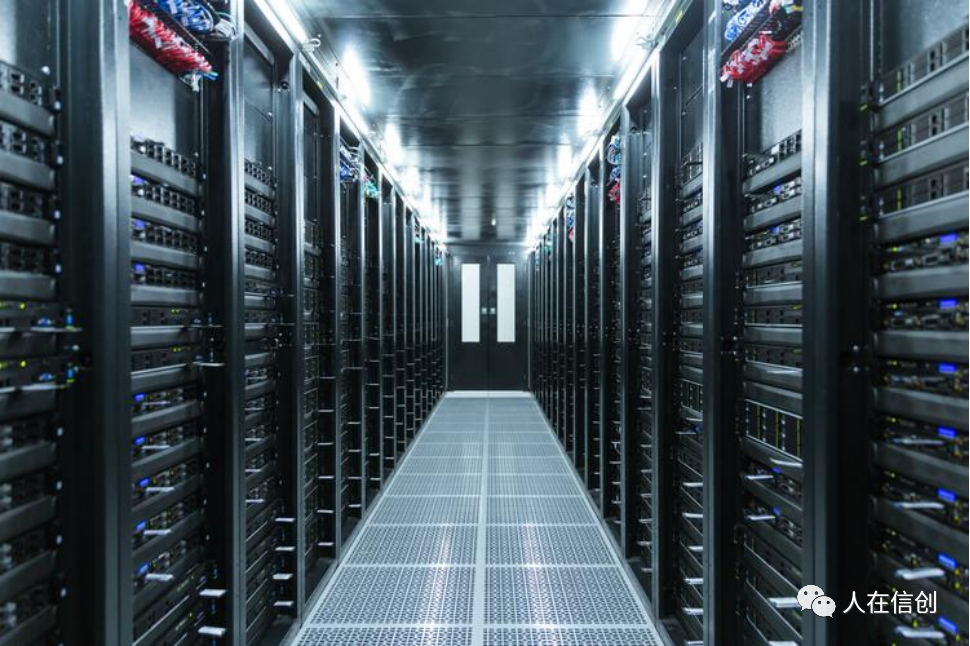In recent years, the decoupling between China and the U.S. has accelerated, making the development of domestic innovation imperative.
The rise of the domestic innovation industry is driven by the external environment. If the international situation deteriorates to the level of the Russia-Ukraine war, the impact on the domestic information industry would be immeasurable. On the other hand, the second transformation of the domestic information technology industry, shifting from “buying” to “creating,” will also promote high-quality economic development.
Therefore, regardless of the starting point, I believe that the current approach of leveraging a large market to drive industrial progress is correct. However, the domestic innovation industry has indeed been in the spotlight in recent years. When choosing domestic innovation products, one must be discerning and not blindly trust manufacturers’ marketing.
Recently, our company has been researching and testing domestic Huawei servers, and I have discovered some interesting points that I would like to share with everyone.
Huawei TaiShan Server——Many Small Temples Under TaiShan
Under the requirements of national policy, we have to purchase domestic servers that meet domestic innovation standards for deploying new business systems and expanding old ones. Vendors like Dell and HP are naturally excluded, leaving us to choose from domestic servers like Huawei, H3C, Inspur, Sugon, and Lenovo. In fact, we had used domestic servers before, but at that time, it was a combination of domestic servers and foreign chips (Intel or AMD), and the business deployment and applications were quite smooth.
However, for domestic innovation, we must use a pure domestic combination of domestic servers and domestic chips. Currently, there are several domestic chip manufacturers, and we purchased the Huawei TaiShan server, which is equipped with the Huawei Kunpeng 920 chip.
While chatting with colleagues in our procurement department about the purchase of servers and suppliers, I was surprised to learn how difficult it is. It turns out that the partners of Huawei Kunpeng servers are all supported by Huawei and do not have their own brands, creating a sense of “one barrel for a thousand uses.”
This was also confirmed in my practical application.
During a memory replacement, I discovered that the Kunpeng’s CPU is actually soldered onto the motherboard. Anyone who has worked with hardware in the ICT circle knows that CPUs on motherboards are usually removable, but the “integrated” motherboard of Kunpeng made me think of “one mold, a thousand forms.”
Curiosity piqued, I went to the official website to check the manufacturers of Huawei’s partner systems (don’t ask me why I didn’t ask Huawei’s technical support; perhaps our department doesn’t purchase many servers, so we weren’t provided with support! We didn’t dare to ask, given their size…). The manufacturers are named after major rivers in China, such as Xiangjiang Kunpeng, Yangtze Computing, Yellow River, and Changhong, and upon closer inspection, they are all controlled by Huawei. No wonder the names give off a strong Huawei flavor; could this avoid homogenization?
Especially in the past two years, with chips being restricted by the U.S., many domestic manufacturers are facing chip shortages. These “small” partners likely need to adhere to Huawei’s rules even more, clinging to Huawei’s support to ensure they can stably receive Huawei chips for shipment and secure their own survival, akin to “finding shade under a big tree.”
While the “small” partners comply, the “big” partners are not as easily swayed. Why don’t large partners like ZTE, H3C, and Inspur play along with Huawei Kunpeng? I have actually looked into this, and it relates to Huawei’s attitude towards its partners.
Before, Cambricon collaborated with Huawei’s AI department but later parted ways due to Huawei absorbing the materials provided by Cambricon for its own use, developing its own AI products while maintaining a facade of cooperation. A colleague from Intel also shared with me Huawei’s questionable practices when Intel’s database product department collaborated with Huawei. They provided a lot of their own technical materials due to previous cooperation, but Huawei did not deliver any product outcomes. Instead, they absorbed the technical solutions and materials, leading my colleague to summarize Huawei’s actions as “free-riding.”
These cases have become part of Huawei’s dark history, causing large manufacturers to be cautious and avoid “testing the waters” in cooperation.
Insights on Using Huawei Servers—Truly Difficult to Use
That said, since we have purchased the Kunpeng server, we must proceed with our business deployment.
Not knowing is one thing, but once we started, it was all trouble. First of all, all systems cannot be freely downloaded online; domestic operating systems have different versions for different chip architectures. If you use the Kunpeng server, you must use the version that specifically supports Kunpeng.
After installing the system, I briefly checked the configuration of the entire server (those working in the domestic innovation field know that most domestic operating system kernels are based on Linux, and some simple command lines can reveal CPU information). One piece of information caught my attention: the flags section of lscpu shows that the instruction set of the Kunpeng server chip is too limited. In simple terms, the fewer instructions available, the lower the compatibility of upper-layer software. For example, we have an application that requires the avx2 instruction, which is absent here, and sure enough, the software I installed reported an error, stating it is not compatible with this chip. I had to contact our technical department to seek vendor support for compatibility and technical assistance.
These are just minor issues. During subsequent software installations and adaptations, I encountered many problems, with errors popping up left and right, and inexplicable crashes… After communicating with the technical department (it is said they spent a long time finding the Huawei Kunpeng server technical support team), they could adapt using migration tools and have some automation tools, but we would need to provide our applications for their team to optimize.
While this reduces our department’s workload, some software is developed by us and requires confidentiality. Additionally, department leadership is concerned that if they reverse-engineer our code structure… After considering everything, we ultimately decided to handle the adaptation ourselves. This back-and-forth wasted a lot of time, making it impossible to complete the migration tasks on schedule, and the deployment timeline kept getting pushed back.
After a series of communications, the issues are still not fully resolved. Huawei representatives then began pushing their Huawei Cloud, Gauss mathematical library, and compilation tools, as well as their ERP system, essentially trying to sell us the “Huawei package,” claiming these are best suited for the Kunpeng environment… I quickly reported this part to my superiors.
Later, the leadership instructed us that we cannot be tied down by suppliers, as this could lead to a loss of control and reliance on Kunpeng for problem-solving (it seems we still need to keep learning). In summary, this entire process of engaging with Huawei has a flavor reminiscent of the monopolistic practices of the past with the “IOE” combination in databases…
People in Domestic Innovation
Scan the code to follow for more insights
Click to see more of your best looks



